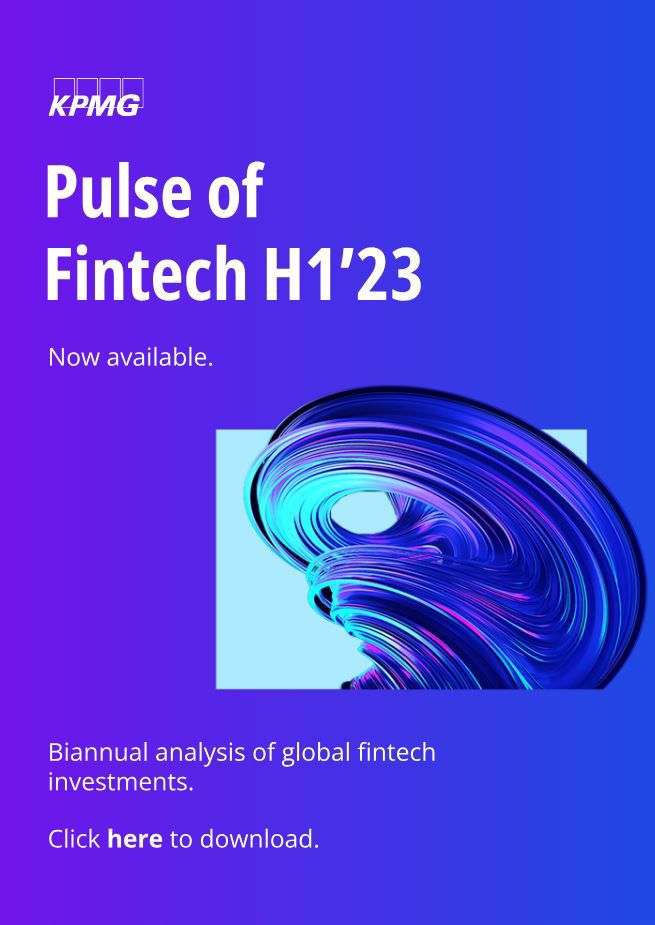H1 2023 - Pulse of Fintech latest edition
The first six months of 2023 were quite challenging for the global fintech market. Some of the challenges were expected — high levels of inflation, rising interest rates, the ongoing conflict between Russia and Ukraine, depressed valuations, and a lack of exits; others were less so, including the collapse of several banks in the US.
But while both total fintech funding and the number of fintech deals globally dropped from $63.2 billion across 2,885 deals in H2’22 to $52.4 billion across 2,153 deals in H1’23, the news wasn’t all negative. Despite market turbulence and declining funding in both the EMEA and ASPAC regions, the Americas saw fintech funding climb from $28.9 billion in H2’22 to $36 billion in H1’23.
Several fintech subsectors also saw strong levels of funding in H1’23. At mid-year, funding in logistics and supply chain-focused fintech was well above all previous annual totals ($8.2 billion), while the $1.7 billion funding in ESG-focused fintech was ahead of 2022’s total. Looking back on the first half of 2023, fintech investor sentiment can be characterized as highly selective. Consider some of the key trends we’ve seen across the fintech sector over the past six months:
- Increasing focus on operational efficiency, sustainable cash flows, and profitability — both from investors and from fintechs looking to delay their next funding rounds.
- Continued resilience of the payments space —particularly payments infrastructure.
- Declining crypto funding in the wake of sector challenges, combined with increasing focus on broader blockchain solutions.
- Rapidly growing interest in potential use cases for generative AI, particularly in cybersecurity, insurtech, and wealthtech.
Heading into the second half of 2023, market challenges are expected to continue — which could make for another bumpy six months. AI is expected to be a hot topic of conversation — and likely funding — even if fintech activity remains subdued. As the market begins to stabilize, however, funding in fintech will likely perk up. Payments, in particular, is well positioned to see funding continue and accelerate, in addition to insurtech and wealthtech. Should market conditions improve, M&A activity could also start to climb again as PE investors and corporates look for good deals.
Whether you’re the CEO of a large financial institution or the founder of an emerging fintech, it’s critical to consider how your company can grow sustainably and profitably even in these uncertain times. As you read this edition of Pulse of Fintech, ask yourself: How can we position our organization to weather today’s storms while positioning for long-term success?
EMEA sees fintech funding slide in H1’23; long-term outlook remains positive
Total fintech funding in the EMEA region dropped considerably — from $27 billion in H2’22 to just $11 billion in H1’23 — as investors in the region enhanced their focus on profitability in the wake of global macroeconomic uncertainty, rising interest rates, the intense pressure on valuations, and a reduction in multiples. Despite the slowdown, the region is expected to remain strong over the longer term once the market uncertainty lessens.
The UK attracted the majority of fintech funding in the EMEA region in H1’23, accounting for half of the region’s 10 largest deals, including the $3.1 billion buyout of data insights firm Wood Mackenzie by Veritas, a $602 million raise by AI-powered lending company Abound, and a $250 million raise by e-trading platform eToro. Other countries that attracted large deals included France (Ledger — $493 million), Switzerland (Teylor — $299 million; Metaco — $250 million), Sweden (SignUp Software — $229 million), and Germany (Moonfare — $152 million).
Trends to watch for in H2’23
- Increasing focus on embedded payments and embedded finance, catalyzed by PSD3.
- Growing attention to wealthtechs focused on democratizing access to funding in asset classes once limited to PE firms and other large-scale investors.
- Strengthening focus on the use of AI and intelligent automation across financial services, including in the insurance and wealth management sectors.
- The role of banks evolving to include more partnerships with fintechs, retailers, and other companies, such as through the offering of B2B embedded banking solutions.
- Emergence of UK crypto regulations in an effort to position itself as a global crypto center.
- Growing M&A activity, particularly from corporates as inflation and interest rates stabilize.
- A thinning out of the number of fintech companies as cash-strapped companies desperate for funding seek sales to other companies.
- Professional investors keeping their spending low. Retaining their power to help their existing portfolio fundings overcome the current drought, avoiding down rounds as much as possible, as multiples in private markets drop following the trend in public markets.
Contact us, and read more insights here
Mads Raahede
CEO & Senior Partner
KPMG in Denmark
Bent Dalager
Partner and Head of Innovation & NewTech
KPMG in Denmark



